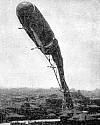
On 23 May 1908, the first U.S. airship disaster struck the airship invented by John A. Morrell. The 450 ft. long dirigible collapsed 300 ft. above the earth, hurling its 16 occupants to the ground, where most were injured, though none died.
There was no radio reporter to lament “Oh, the humanity!” but instead, reading the article Huge Dirigible Balloon Collapses from Popular Mechanics (1908) will give you some insight into the spectacle viewed by a crowd of over 1,000 people.

On 23 May, John Bardeen was born, the American physicist who was co-winner of the Nobel Prize for Physics in both 1956 and 1972. Today's book pick is: True Genius: The Life and Science of John Bardeen: The Only Winner of Two Nobel Prizes in Physics, by Vicki Daitch, Lillian Hoddeson.
What is genius? Define it. Now think of scientists who embody the concept of genius. Does the name John Bardeen spring to mind? Indeed, have you ever heard of him? A handful of names that do come to mind are mostly because they are larger-than-life characters, who - like Einstein - received much media attention.
The authors show how John Bardeen simply fits a different profile of genius. Through an exploration of his science as well as his life, a fresh and thoroughly engaging portrait of genius and the nature of creativity emerges. This perspective will have readers looking anew at what it truly means to be a genius.
It is available from Amazon, typically about New from $1.99. Used from $5.00. (As of earlier time of writing - subject to change.)
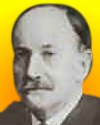 | The limitations of archaeology are galling. It collects phenomena, but hardly ever can isolate them so as to interpret scientifically; it can frame any number of hypotheses, but rarely, if ever, scientifically prove. |
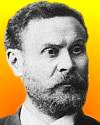 | To invent an airplane is nothing. To build one is something. But to fly is everything. |
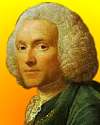 | Anatomists have ever been engaged in contention. And indeed, if a man has not such a degree of enthusiasm, and love of the art, as will make him impatient of unreasonable opposition and of encroachments upon his discoveries and his reputation, he will hardly become considerable in Anatomy or in any branch of natural knowledge. |
| Before you look at today's web page, see if you can answer some of these questions about the events that happened on this day. Some of the names are very familiar. Others will likely stump you. Tickle your curiosity with these questions, then check your answers on today's web page. | |
| Births | |
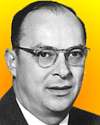 | John Bardeen, born 23 May 1908, was an American physicist who was co-winner of the Nobel Prize for Physics in both 1956 and 1972. With Leon N. Cooper and John R. Schrieffer he was awarded the 1972 prize for development of the theory of semiconductors, usually called the BCS-theory. He shared the 1956 prize with William B. Shockley and Walter H. Brattain for their joint invention. What invention was the work of Bardeen, Shockley and Brattain, recognized by the 1956 Nobel Prize for Physics? |
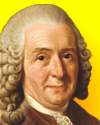 | On 23 May 1707, Carolus Linnaeus was born. As a Swedish explorer and botanist, he was the first to frame principles for a certain uniform system. What was the most famous system created by Linnaeus? |
| Deaths | |
 | Georges Claude (1870-1960) was a French engineer, chemist, and inventor. He invented a light which was the forerunner of the fluorescent light. He first publicly displayed his lamp on 11 Dec 1910 in Paris. He introduced his light to the U.S. at a Packard car dealership in Los Angeles, where it was purchased by Earle C. Anthony for $24,000. What is the form of lighting he invented? |
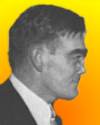 | William Webster Hansen (1909-1949) was an American physicist who contributed to the development of radar, and is regarded as the founder of microwave technology. He developed the particular kind of vacuum tube essential to generate microwaves. What is the name of this special vacuum tube? |
| Events | |
Thm.jpg) | On 23 May 1785, a letter from Benjamin Franklin documented his invention of his new glasses. He was writing from France to a friend describing the solution to a problem concerning glasses of the era. The invention had limited acceptance at a time when even ordinary spectacles in the colonies already cost as much as $100 per pair. What was Franklin’s invention he described in this letter? |
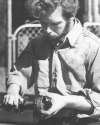 | On 23 May of a certain year, a first transplant of a human limb took place. A 12-year-old boy’s severed right arm was reattached by Drs. Donald A. Malt and J. McKhann at the Massachusetts General Hospital. In what decade did this limb transplant take place? |
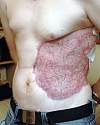 | On 23 May 1994, an explanation for a “deadly flesh-eating bug” outbreak in England was offered by British doctors. The disease was attributed to a cluster of unusually intense infections by a common bacterium. The people in Gloucestershire had been injured by a toxin that dissolved flesh and fat which came from the excessive bacteria’s attack. Normally, the bacteria is associated with a very simple infection, in no way life-threatening under normal circumstances. What is the normal result of a simple infection by this bacteria? |
Fast answers for the previous newsletter for May 22: Thomas Gold • 9 pounds (4 kg) • cytology • television; cathode ray tube • Top Of The Needle restaurant in the Space Needle in Seattle, Washington • rattlesnake • the decade including the year 1892.
 If you enjoy this newsletter, the website, or wish to offer encouragement or ideas, please send feedback by using your mail reader Reply button.
If you enjoy this newsletter, the website, or wish to offer encouragement or ideas, please send feedback by using your mail reader Reply button. Your click on a Facebook, StumbleUpon, or other social button on the site webpages is also a welcome sign of appreciation. Thank you for using them.
© This newsletter is copyright 2020 by todayinsci.com. Please respect the Webmaster's wishes and do not put copies online of the Newsletter — or any Today in Science History webpage. (If you already have done so, please remove them. Thank you.) Offline use in education is encouraged such as a printout on a bulletin board, or projected for classroom viewing. Online, descriptive links to our pages are welcomed, as these will provide a reader with the most recent revisions, additions and/or corrections of a webpage. For any other copyright questions, please contact the Webmaster by using your mail reader Reply button.
--
If you do not want to receive any more newsletters, Unsubscribe
To update your preferences and to unsubscribe visit this link
Executive Real Estate Business Class
-
"It was like a man with wings. It wasn't like anything you'd see on TV or in a monster movie." ...
About the publisher
Search This Blog
Blog Archive
-
▼
2021
(585)
-
▼
May
(62)
- Tonight: Back-to-Back Premieres
- On This Day for May 31 - Adolf Eichmann hanged, Cl...
- Newsletter for Monday 31 May.
- On This Day for May 30 - Joan of Arc burned at the...
- TONIGHT at 8/7c: The Tulsa Race Massacre Revealed
- Newsletter for Sunday 30 May.
- Bundle Up For The Summer!
- On This Day for May 29 - Mount Everest summit reac...
- Newsletter for Saturday 29 May.
- On This Day for May 28 - Amnesty International fou...
- Newsletter for Friday 28 May.
- On This Day for May 27 - Founding of St. Petersbur...
- Newsletter for Thursday 27 May.
- On This Day for May 26 - Martin Luther declared a ...
- Newsletter for Wednesday 26 May.
- On This Day for May 25 - U.S. Constitutional Conve...
- Newsletter for Tuesday 25 May.
- Behind Every Empire There’s a Titan
- On This Day for May 24 - Opening of the Brooklyn B...
- On This Day for May 23 - Tibet annexed by China, C...
- Newsletter for Sunday 23 May.
- The Tulsa Race Massacre, 100 Years Later
- On This Day for May 22 - Roman Emperor Constantine...
- Newsletter for Saturday 22 May.
- On This Day for May 21 - First nonstop solo transa...
- Newsletter for Friday 21 May.
- On This Day for May 20 - U.S. Homestead Act signed...
- Newsletter for Thursday 20 May.
- On This Day for May 19 - Ringling Bros. Circus for...
- Newsletter for Wednesday 19 May.
- Learning This Fun Doesn't Need A Summer Break
- On This Day for May 18 - Eruption of Mount St. Hel...
- Newsletter for Tuesday 18 May.
- On This Day for May 17 - School segregation outlaw...
- Newsletter for Monday 17 May.
- Follow the trail of 400 facts!
- On This Day for May 16 - Warsaw Ghetto Uprising su...
- Newsletter for Sunday 16 May.
- On This Day for May 15 - Edith Cresson appointed F...
- Newsletter for Saturday 15 May.
- On This Day for May 14 - Declaration of Israel's s...
- Newsletter for Friday 14 May.
- On This Day for May 13 - U.S. declaration of war o...
- Newsletter for Thursday 13 May.
- Ridiculous History You Want To Know About!
- On This Day for May 12 - First flight over the Nor...
- Newsletter for Wednesday 12 May.
- On This Day for May 11 - “New Rome” established by...
- Newsletter for Tuesday 11 May.
- On This Day for May 10 - Nelson Mandela inaugurate...
- Newsletter for Monday 10 May.
- On This Day for May 9 - Fourth and final voyage of...
- On This Day for May 7 - Theatre Royal opened, Pyot...
- On This Day for May 5 - Mexican victory in the Bat...
- On This Day for May 4 - Four students shot at Kent...
- On This Day for May 3 - Margaret Thatcher elected ...
- Newsletter for Monday 3 May.
- TONIGHT: The Bin Laden Raid, Revealed
- On This Day for May 2 - Lou Gehrig's 2,130-game st...
- Newsletter for Sunday 2 May.
- On This Day for May 1 - May Day founded, Arthur We...
- Newsletter for Saturday 1 May.
-
▼
May
(62)
-
Blogroll
-
About
HistoryFact










0 comments:
Post a Comment